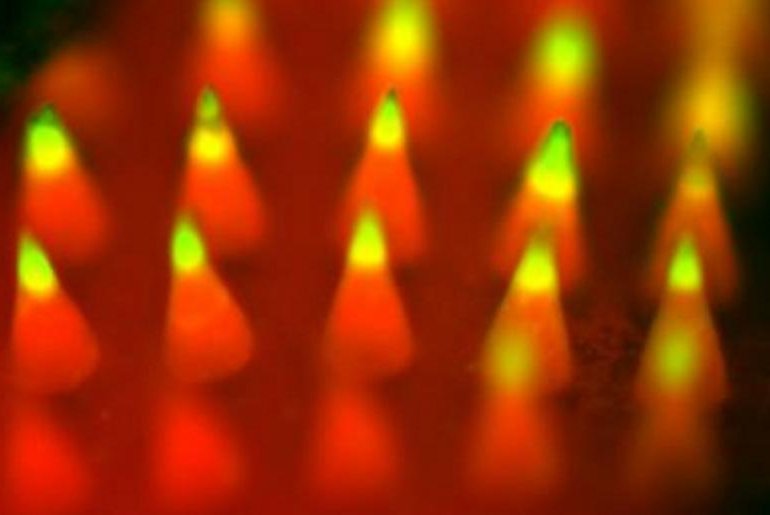Researchers have developed a technique that uses a patch embedded with microneedles -- like the patch pictured here -- that effectively delivered immunotherapy treatment directly to the site of melanoma skin cancer in lab tests with mice. Photo by Yanqi Ye
RALEIGH, N.C., March 25 (UPI) -- Delivering immunotherapy drugs directly to melanoma skin cancer sites was more effective at fighting the disease than injecting them into the bloodstreams of mice in lab tests, according to researchers in North Carolina.
Researchers at the North Carolina State University and the University of North Carolina developed a microneedle patch they say lowers the negative effects of immunotherapy drugs while increasing their ability to help the immune system fight cancer.
Cancer cells express proteins that prevent immune T cells from recognizing and attacking them. Immunotherapy drugs use anti-PD-1 antibodies to prevent cancer from hiding itself from T cells.
Although immunotherapy treatment can be very effective in helping the body fight cancer, researchers said releasing them into the bloodstream is imprecise, and as a result requires a higher dose for the drug work, which can cause autoimmune disorders. The patch solves this problem, the researchers said.
The patch is an array of microneedles made from hyaluronic acid, which are packed with nanoparticle-embedded anti-PD-1 antibodies and glucose oxidase. Blood enters the microneedles when the patch is applied. Glucose in the blood makes glucose oxidase produce acid, which breaks down the nanoparticles, releasing the drug into the tumor.
"Because of the sustained and localized release manner, mediated by microneedles, we are able to achieve desirable therapeutic effects with a relatively low dosage, which reduces the risk of auto-immune disorders," Zhen Gu, an assistant professor of biomedical engineering at North Carolina State University, said in a press release.
Photo by North Carolina State University
For the study testing the patch, published in the journal Nano Letters, the researchers compared the outcomes of mice with melanoma treated with either the patch, injecting antibodies into the bloodstream, or injecting them directly into the tumor.
After 40 days, 40 percent of the mice treated with the patch were alive while none of the mice in the other treatment groups were alive. When researchers added a second drug, anti-CTLA-4 to the patch, 70 percent of the mice survived and none had detectable melanoma left after 40 days.
"We're excited about this technique, and are seeking funding to pursue further studies and potential clinical translation," Gu said.
















